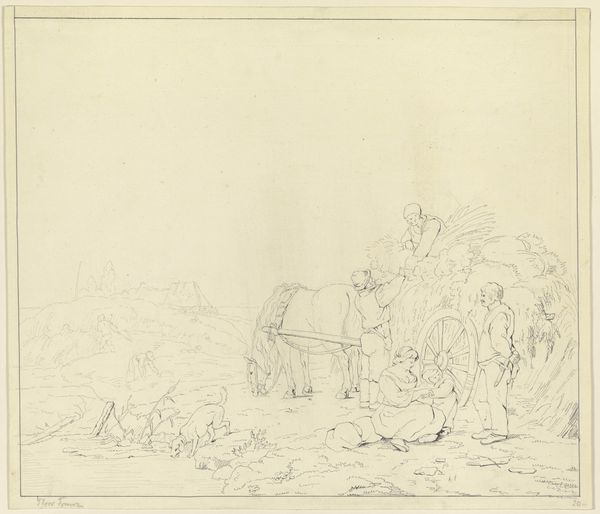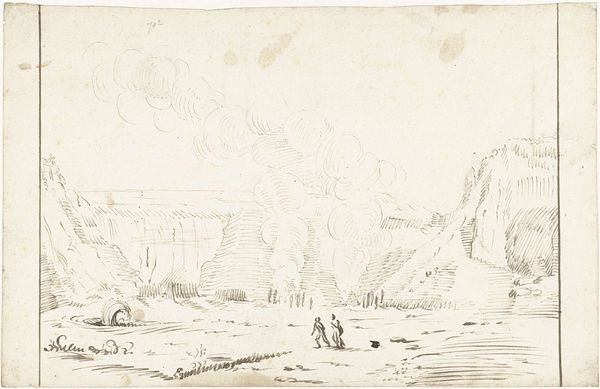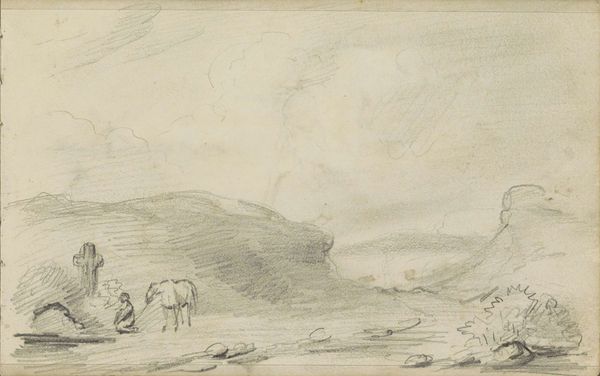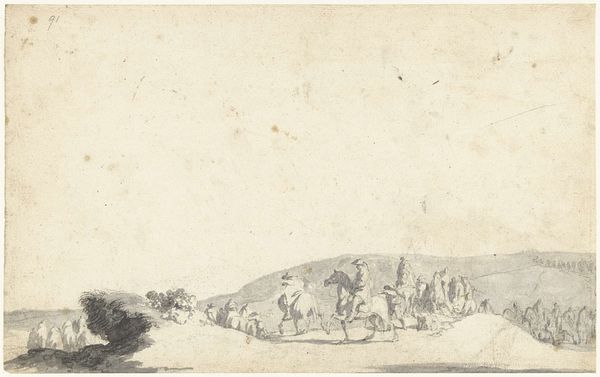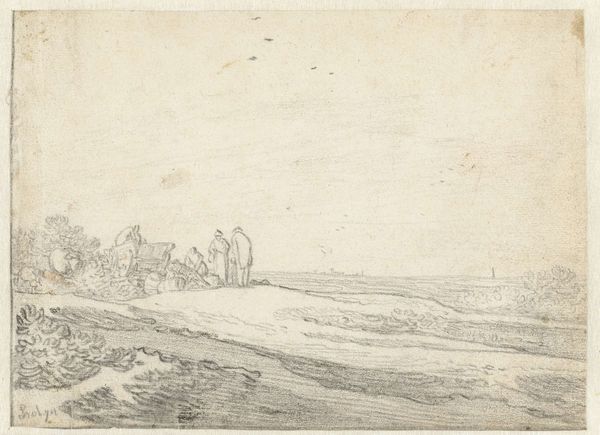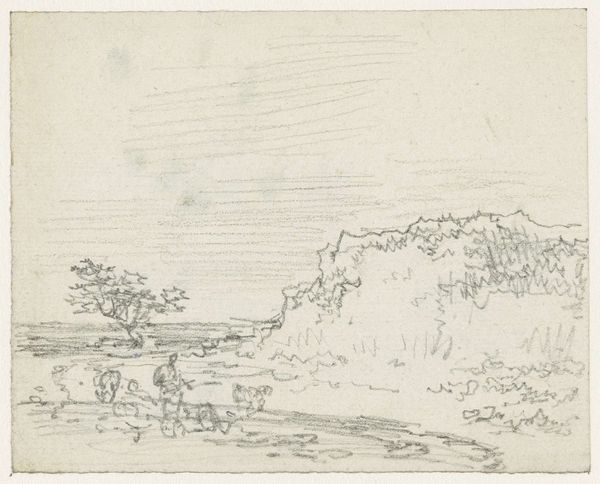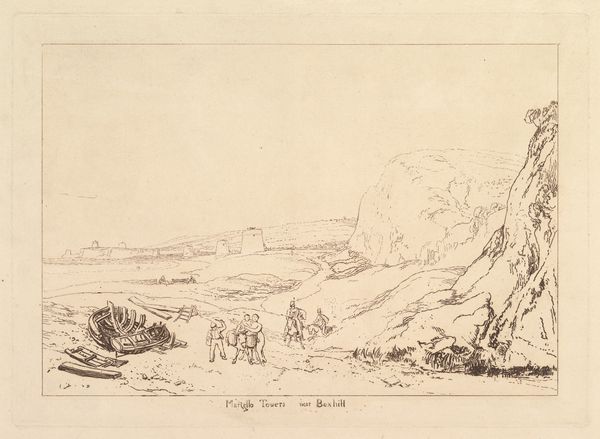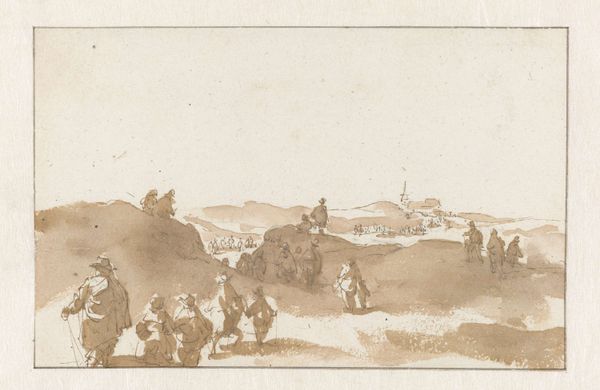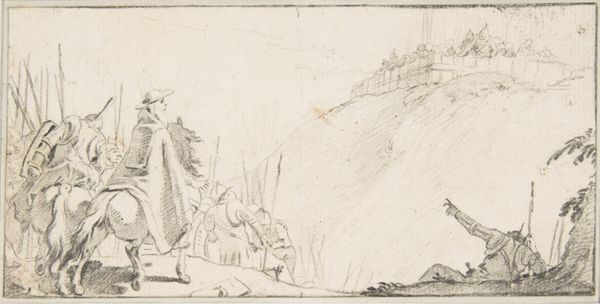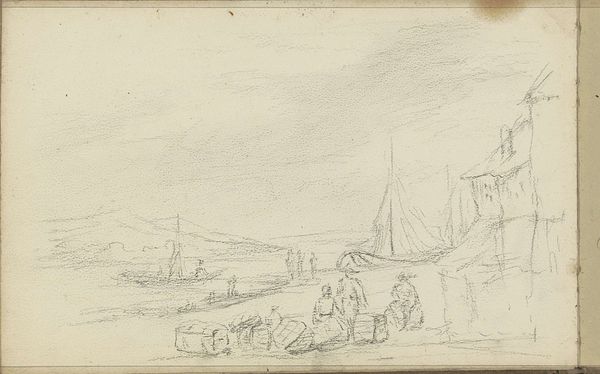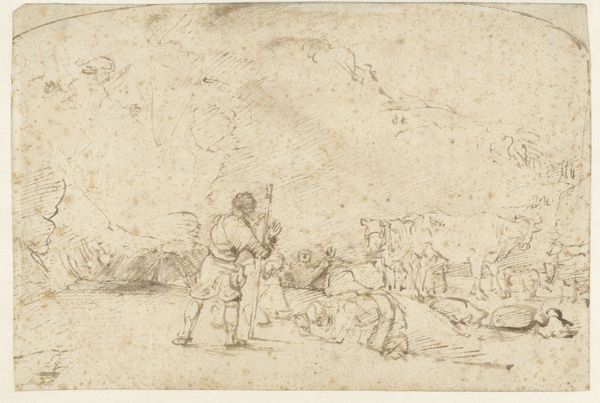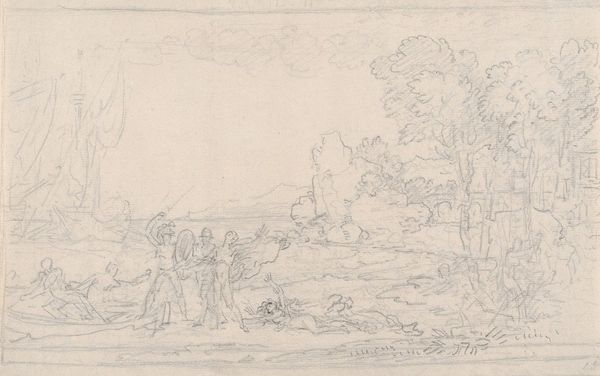
drawing, paper, pencil
#
drawing
#
light pencil work
#
quirky sketch
#
dutch-golden-age
#
landscape
#
figuration
#
paper
#
personal sketchbook
#
sketchwork
#
ink drawing experimentation
#
pen-ink sketch
#
pencil
#
line
#
sketchbook drawing
#
genre-painting
#
storyboard and sketchbook work
#
sketchbook art
#
realism
#
initial sketch
Dimensions: height 210 mm, width 313 mm
Copyright: Rijks Museum: Open Domain
Curator: Here we have "Strandgezicht," or "Beach Scene," a drawing rendered in pencil around 1634. It’s currently held at the Rijksmuseum. Editor: It feels… incomplete? Almost a fleeting glimpse captured with rapid, light pencil strokes. Curator: Precisely. Consider how ter Borch articulates form through delicate, almost skeletal lines. Note the meticulous placement of each stroke defining the figures and landscape. The composition itself invites scrutiny; it’s divided unevenly, offering an open expanse contrasted with a cluster of activity. Editor: Right. But my eye is drawn to the materiality – that paper. The drawing seems to honor the material itself, a quick rendering rather than attempting to transform its character. It hints at the social circumstances, too. Was this a luxury item, paper readily available for such casual sketches? Curator: That’s fascinating. However, one might also consider the absence of color. Its reliance on line and tone intensifies our perception. Doesn’t the minimal palette emphasize the inherent structure, pushing beyond mere representation toward abstraction? Editor: Possibly, yet I see more practicality. Given its simplicity, imagine the daily lives of those depicted: someone pushing a barrel; figures milling about—work. Are we meant to overlook their labor to reach abstraction? Consider too that it is likely preparatory sketch – what labor went into this labor? Curator: Still, the very lack of a rigid finish underscores the freedom of the artist. Think about the gestural quality inherent in these kinds of sketches—a focus more on being rather than telling… Editor: Yes, well the means of its production speak volumes—pencil to paper, fast capture of a brief encounter, where the human figures engaged on labor in the strand. Curator: Fair enough. The beauty in "Strandgezicht" resides not just in the image it presents but in the conversation it instigates, isn’t it? Editor: Yes. In that sense it reflects an important reminder of Dutch artistic traditions that intersect daily lives and the reality and beauty of manual efforts, indeed.
Comments
No comments
Be the first to comment and join the conversation on the ultimate creative platform.

